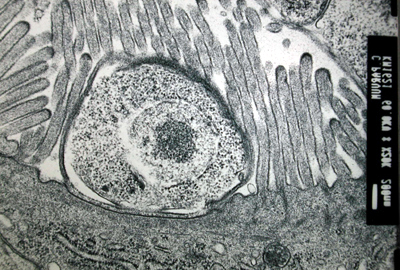
SMALL INTESTINE ENGINEERING
Using Epithelial Stem Cells
| Future Development |
![]()
This Site is Designed by Dreamweaver.
For Any Questions Contact Mahya Farnia
Scaffold properties should be specific to enable cell penetration and tissue formation. Property of Scaffold: Ideal scaffold for tissue engineering should have the following characteristics:
Function of Scaffold:
Scaffold for tissue engineered intestine: There are limited options available for tissue engineering intestine. The three groups that worked on developing scaffolds are presented in the table below:
|
||||||||
![]()
